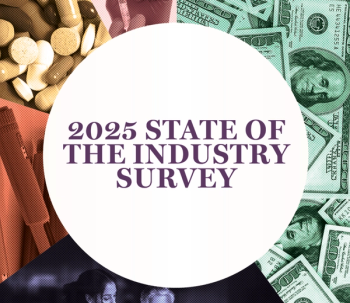
Drug Pricing Not Main Driver of State Medicaid Spending | AMCP Nexus 2025
An abstract presented at AMCP Nexus 2025 showed that Medicaid drug spend in 10 states in FY 2023 was approximately equal to or less than the national drug spending rate of 14%.
Drug pricing is not the main driver of state Medicaid spending, according to an abstract presented this week at the 2025 Academy of Managed Care Pharmacy (AMCP) Nexus Conference.
The abstract, titled ‘Understanding state Medicaid spending on prescription drugs: A 10-state comprehensive analysis of net state Medicaid drug spending as part of the total Medicaid budget’ was led byBridget Doherty, M.P.H., MS,director of access and policy research and scientific affairs at Johnson and Johnson Innovative Medicine and Silas Martin, head of access and policy research at Johnson and Johnson. State specific reports on each of the states studied will soon available at the
Doherty and Martin found that the Medicaid drug spending ranged from 4.7% to 14.3% of total Medicaid spending across 10 states, which is near or below the national drug spending rate of 14%.
The team came to this conclusion by analyzing state Medicaid drug expenditures and drug rebate income data. This was used to generate an overview of state spending on prescription drugs and estimate Medicaid drug spending as a percentage of total Medicaid expenditures for 10 states in FY 2023. Data sources included Medicaid State Drug Utilization Data, Medicaid Budget and Expenditure System/State Children’s Health Insurance Program (CHIP) Budget and Expenditure System (MBES/CBES) Form CMS-64 and state budget documents, the abstract says. The 10 states studied were California, Colorado, Florida, Michigan, New York, Ohio, Pennsylvania and Washington.
“The main implication is better context around the discussion of drug spend in Medicaid,” Doherty said in an email interview with Managed Healthcare Executive. “While high drug pricing makes headlines and is often the focus of legislation and policymaker attention, drug pricing is not the main driver of state Medicaid spending. A better understanding of state spending on medicine in Medicaid would help drive effective policy solutions to balance access and spending.”
Medicaid prescription drug spending has been on the rise in recent years, partly due to new, expensive drugs like anti-obesity medications and cell and gene therapies. Specifically, net spending on Medicaid prescription drugs increased by 72% from $30 billion in FY 2017 to $51 billion in FY 2023, according to a separate
“Our intent with this research is to help ensure discussions around healthcare spending and drug pricing are rooted in a factual understanding of what states are spending on medications and the value that spending may bring,” Doherty continued. “In addition, a better understanding of what is driving Medicaid healthcare costs would help this conversation and drive better policy solutions.”
AMCP Nexus 2025 is held from Oct. 27 to Oct. 30 in National Harbor, MD.
Newsletter
Get the latest industry news, event updates, and more from Managed healthcare Executive.





















































